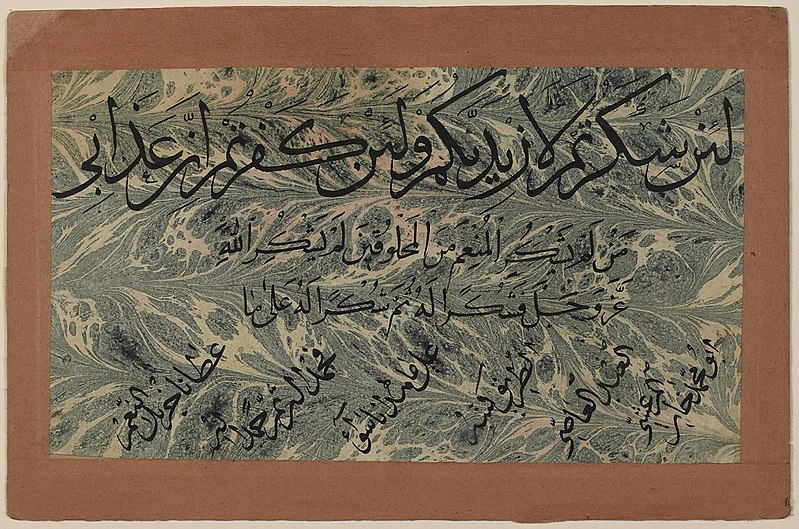চিত্ৰ:Quran 14.jpg

এই খচৰাৰ আকাৰ: 800 × 529 পিক্সেল. আন ৰিজ'লিউশ্যনসমূহ: 320 × 212 পিক্সেল | 640 × 423 পিক্সেল | 1,024 × 678 পিক্সেল | 1,280 × 847 পিক্সেল | 2,932 × 1,940 পিক্সেল।
মূল ফাইল (2,932 × 1,940 পিক্সেল, ফাইলৰ মাত্ৰা: 2.28 MB, MIME প্ৰকাৰ: image/jpeg)
ফাইলৰ ইতিবৃত্ত
ফাইলৰ আগৰ অৱস্থা চাবলৈ সেই তাৰিখ/সময়ত ক্লিক কৰক।
| তাৰিখ/সময় | ক্ষুদ্ৰ প্ৰতিকৃতি | আকাৰ | সদস্য | মন্তব্য | |
|---|---|---|---|---|---|
| বৰ্তমান | 00:51, 25 June 2009 |  | 2,932 × 1,940 (2.28 MB) | Calliopejen1 | {{Information |Description=Dimensions of Written Surface: 20 (w) x 11.5 (h) cm Script: thuluth, Persian naskh, and tawqi' This fragmentary calligraphic panel includes a verse from the Qur'an (14:7) and praises to God executed in thuluth, Persian naskh, |
ফাইল ব্যৱহাৰ
তলত দিয়া পৃষ্ঠাটোৱে এই ফাইলটো ব্যৱহাৰ কৰে:
ফাইলৰ গোলকীয় ব্যৱহাৰ
তলত দিয়া আন ৱিকিসমূহে এই ফাইলটো ব্যৱহাৰ কৰে:
- af.wikipedia.org-ৰ ব্যৱহাৰ
- bg.wikipedia.org-ৰ ব্যৱহাৰ
- bs.wikipedia.org-ৰ ব্যৱহাৰ
- de.wikipedia.org-ৰ ব্যৱহাৰ
- en.wikipedia.org-ৰ ব্যৱহাৰ
- eo.wikipedia.org-ৰ ব্যৱহাৰ
- fr.wikipedia.org-ৰ ব্যৱহাৰ
- hu.wikipedia.org-ৰ ব্যৱহাৰ
- kk.wikipedia.org-ৰ ব্যৱহাৰ
- lt.wikipedia.org-ৰ ব্যৱহাৰ
- nl.wikipedia.org-ৰ ব্যৱহাৰ
- ru.wikipedia.org-ৰ ব্যৱহাৰ
- sv.wikipedia.org-ৰ ব্যৱহাৰ
- vi.wikipedia.org-ৰ ব্যৱহাৰ